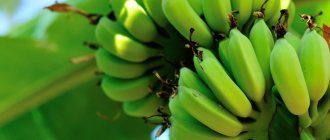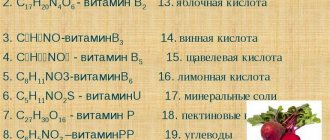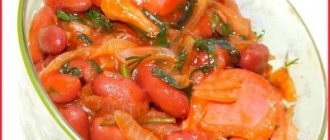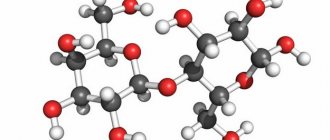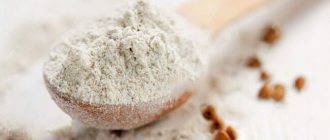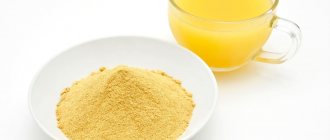How to fill protein as a vegetarian
Protein is a building material for our body; it is necessary for everyone, without exception, but especially necessary for those whose lives are closely connected with sports and high physical activity. About 20% of a person's weight is protein, and half of this percentage is muscle.
Protein contains twenty amino acids, nine of which the body cannot synthesize on its own. Protein is found in large quantities in meat, but for those who have switched to a plant-based diet, the issue of replenishing protein and essential amino acids is quite acute.
We hasten to assure you: it is possible to fill the shortage of building materials without meat. An example is the many athletes who switched to a vegetarian diet, who at the same time not only retained their strength, but also significantly improved their athletic achievements.
So, what sources of protein exist for vegetarians and how to replenish reserves in our body? There are two ways to replenish protein in the body: natural and with the addition of various food additives.
The first involves consuming foods rich in plant-based protein, such as tofu, nuts, legumes, seeds and sesame. The second involves the use of so-called protein shakes.
Today there are a huge number of powdered shakes, and they can really replenish the protein content in the body. There are separate lines for vegetarians, but the safety of using such cocktails is a topic for another discussion.
We suggest returning to natural products, in particular legumes, and considering their beneficial properties.
Peas
A favorite among legumes, especially among children, is, of course, peas. It can be grown even where there is very little space for other garden crops, for example, near a fence. If you provide it with the “right” conditions, growing peas will not require much trouble from you.
You can plant peas in open ground only after the soil has warmed up sufficiently. Make a garden bed in a sunny place protected from the wind. Install supports for bushes in advance, because... peas are climbing plants. He will not reward you with a rich harvest if the stems lie on the ground. Do not forget about watering and loosening - and after 3 months you will be able to taste sweet green peas.
In the second half of summer, after harvesting some vegetable crops, you can once again sow peas in the vacated beds. However, choose only early-ripening varieties - and then before the onset of cold weather you will be able to harvest another harvest of peas.
- What peas can be sown in August - the best varieties and proper agricultural technology
The middle and even the end of summer is the time to start the second wave of planting in the garden.
Beneficial properties of legumes
Let us immediately note that the culture of consumption of legumes is rooted in the deep past. In Rome and Greece, as well as in Ancient Egypt, legumes were considered sacred plants.
The priests of Ancient Egypt used the fruits of legumes in religious rituals, as evidenced by archaeological finds of beans in the sarcophagi of ancient pharaohs.
Our ancestors also included legumes in their menu. Beans entered ancient Russian cuisine during the time of Yaroslav the Wise. Legumes are divided into three groups: fruit, fodder and ornamental. Only fruits are eaten. These include: peas and beans, lentils, chickpeas, mung beans
and other crops.
The main beneficial property of legumes is their high protein content - in 100 grams of legumes it reaches 25%. As noted above, our body needs protein, which means that legumes should be present in a vegetarian’s diet along with other protein-rich foods.
In addition, legumes contain potassium, iron, phosphorus and magnesium. These minerals are responsible not only for the functioning of the heart, but also for the condition of bone tissue. Legumes are also rich in Omega-3 and Omega-6 acids, which have a beneficial effect on many systems of our body.
Due to the antioxidants contained in legumes, heart disease and cancer are prevented. The same antioxidants slow down the aging process in the body. Legumes contain many vitamins A and B, which have a beneficial effect on the nervous system and improve hair growth.
Legumes will be especially beneficial for women, since the folic acid they contain ensures women's reproductive health. Legumes are also rich in fiber, which improves digestion and intestinal function.
Peanuts: nut or not nut?
Cultivated peanuts (“groundnuts”) are an important agricultural crop, cultivated on an industrial scale in some regions of Transcaucasia, less often in Central Asia and the southern regions of the European part, resulting in fruits – peanut “nuts”. The well-known name “groundnut” is not popular. It appeared in Russian thanks to translation from a foreign language. However, from a botanical point of view, calling peanuts a nut is incorrect, since they are actually legumes.
Peanut seeds contain up to 53% fatty oil, up to 37% proteins, up to 21% starch, up to 7.47% sugars, arachine and conaraquine, amino acids, saponins, purines, as well as B vitamins (especially in the seed skin), vitamin E, etc. .
Full-fat peanut oil is used in medicine along with almond oil as a base for parenteral dosage forms, and peanut seeds are used as a substitute for sweet almond seeds for the preparation of emulsions.
In the USA, ground peanuts are combined with vegetable oil to create peanut butter. As a rule, this paste is consumed by spreading it on bread or dipping various foods into it. However, since the early 1990s, an increasing incidence of serious, easily provoked allergic reactions to peanuts has become an important problem in this country. In some health care and school settings, the findings have prompted controversial bans on all products containing peanuts.
Peanut candy for a special occasion
Ingredients: dry peanuts 100 g, oat flakes 200 g, raisins 50 g, honey 50 g, coconut flakes 50 g.
Preparation. If you bought raw peanuts at the store, you should fry them a little in a frying pan. To do this, it needs to be very hot. No need to add any oil. Then you need to reduce the heat to low and add the peanut seeds. When frying, it must be stirred constantly until the pink skin begins to separate easily from the seeds. Let the peanuts cool.
Place oatmeal in a frying pan and lightly fry. The pan must be completely dry. Let the flakes cool in the same way. After that, combine them with crushed peanuts (you should get medium-sized pieces). Rinse raisins with boiling water. Dry and add to the resulting mixture. Now it’s time to add honey to “glue” all the ingredients together and form a single mass suitable for shaping by hand, then leave it uncovered overnight. Overnight, this delicious mixture will become saturated with honey and thicken. The next day all that remains is to form the balls, roll them in coconut flakes and you can treat your guests!
When is the best time to eat legumes?
For all their benefits, legumes are a heavy product, which means our body needs time to digest them. From an Ayurvedic point of view, the time when our digestive fire (agni) is strongest is lunch. Therefore, it is best to consume legumes at lunch to give our stomach a chance to digest the food.
It is appropriate to eat legumes for breakfast; legumes can be eaten in small quantities in the evening, but no later than three to four hours before bedtime. Eating legumes just before a night's rest can disrupt your sleep and lead to gas and bloating.
It is important to remember that, despite the fact that beans are rich in protein and other useful elements, you should not overload them. As with other foods, moderation is important here, since overeating leads to disturbances in the intestinal tract, bloating and gas.
If you cook legumes correctly, use them only with compatible foods, but feel heaviness in your stomach, then you should stop eating them for a while. After the gastrointestinal tract has been restored, begin to gradually add legumes to your diet.
Legumes are contraindicated for inflammatory diseases of the stomach; if you have diseases associated with the biliary tract, you should limit your consumption of legumes.
Contraindications
Frequent consumption of beans is not recommended for people with sensitive intestines and stomach diseases, as this can lead to microflora irritation, gas formation and bloating.
The purine substances they contain aggravate the symptoms of nephritis and gout, so eating beans is strictly prohibited for these diseases.
Other contraindications to eating beans include: flatulence, constipation, diseases of the gallbladder, pancreas. Elderly people and children should also consume beans with caution.
Be sure to read: How many calories are in canned green peas, the benefits and harms of the product in a can, BJU
How often should you eat legumes?
In 2021, the Ministry of Health published recommendations for rational food consumption1, according to which a person should consume at least 120 grams of legumes per week. In this case, the optimal consumption (according to the same recommendations) is 200–300 grams per week in cooked form.
There is no need to consume the weekly norm at once; it is enough to divide it into several meals a week. However, it is important to note that such a norm was adopted with the expectation that a person consumes the meat of animals and birds.
For vegetarians, the weekly norm of legumes is 600–800 grams per week. It is also advisable to divide the specified norm into several meals on different days.
Most important culture
Wheat can safely be called the most important and important cereal crop. It is its reserve in the country that is considered the main one. By grinding its grains, specialized industries produce baking flour of various qualities and several types of cereals. Secondary production receives a wide variety of bakery products, as well as all types of pasta. Millions of people need these products every day. But it all starts with a small grain growing in an ear.
Wheat varieties are distinguished by different grain hardness - soft or hard.
There are winter and spring species. The first ones are sown in winter and receive a harvest in the summer, but these varieties are exposed to winter weather and severe frost. To prevent the grains from being eaten by agricultural pests during the cold months, they are well treated. This does not affect the quality of the harvest in any way.
Spring wheat varieties are sown in early spring and harvested in autumn.
How to get the most from legumes
In order to get the maximum benefit from legumes, you need to follow simple recommendations that cover the process from purchase to serving in finished form. If you follow these tips, beans will not only retain their beneficial qualities, but will also surprise even gourmets with their taste.
- When purchasing, choose only clean and smooth seeds.
- Before cooking, beans must be soaked for 4–5 hours in cool water, and the water must be changed to fresh several times.
- Beans need to be cooked in a small amount of water.
- After cooking, the beans are left in the same water to cool. This way they will retain their benefits.
- When cooking, it is recommended to add spices to taste: ginger, black pepper and turmeric. This will improve the digestibility and digestion of legumes.
- To reduce gas formation, combine legumes with fennel, dill, and cumin.
- To improve the absorption of the trace element iron from legumes, add tomatoes or lemon juice to your dishes.
- Do not combine legumes with cabbage and asparagus. Also, do not cook bean dishes with the addition of garlic or onions.
- If you have not yet eliminated meat from your diet, then do not combine it with legumes. This will increase the protein load on your body.
- After eating legumes, avoid sweets for at least three hours. Also, don't eat fruit right away.
These simple recommendations will allow you to extract maximum benefits from legumes for the body.
Calorie content of main cereals in dry and boiled form
The calorie table for cooked cereals will tell you the energy value of these products. The numbers differ from the results of dry grains. This is due to percentage losses during heat treatment - a process that is absolutely normal for each product.
Dry cereals contain many useful substances, various vitamins, micro- and macroelements.
There are even more of them in unrefined grain. But this is only about cereals boiled in water. Nutritional and energy value of various types of cereals
| Name | State | Proteins, g | Fats, g | Carbohydrates, g | Calorie content, kcal |
| Millet | dry | 11,5 | 3,3 | 69,3 | 348,0 |
| boiled | 10,8 | 2,9 | 63,0 | 316,8 | |
| Buckwheat | dry | 13,0 | 3,0 | 68,0 | 350,0 |
| boiled | 12,2 | 2,6 | 61,8 | 314,9 | |
| Oats | dry | 11,0 | 6,0 | 51,0 | 310,0 |
| boiled | 10,3 | 5,2 | 46,4 | 273,6 | |
| Rice | dry | 7,0 | 1,0 | 71,4 | 330,0 |
| boiled | 6,5 | 0,8 | 64,9 | 288,7 | |
| Wheat | dry | 7,5 | 1,3 | 41,4 | 198,0 |
| boiled | 7,0 | 1,1 | 37,6 | 185,6 | |
| Semolina | dry | 10,3 | 1,0 | 67,4 | 328,0 |
| boiled | 9,6 | 0,8 | 61,3 | 286,7 | |
| Pearl barley | dry | 9,3 | 1,1 | 73,7 | 320,0 |
| boiled | 8,7 | 0,9 | 67,0 | 306,5 | |
| Corn | dry | 8,3 | 1,2 | 75,0 | 337,0 |
| boiled | 7,8 | 1,0 | 68,2 | 308,6 | |
| Peas | dry | 23,0 | 1,0 | 62,0 | 350,0 |
| boiled | 21,6 | 0,8 | 56,4 | 314,7 |
The calorie content of dry and boiled cereals will differ noticeably less if additional products are added during cooking. The nutritional value numbers will change upward.
How to cook legumes correctly
In order for a vegan to get the maximum protein from legumes, it is worth remembering a few tips for preparing them correctly.
As noted earlier, legumes require mandatory soaking, which starts the fermentation process. Fermentation will allow products to be better absorbed by our body.
Below is a table: how much to soak and how much to cook legumes.
| Type of legume | Soaking time | Cooking time |
| Soybeans | 7 hours (it’s better to leave it in water overnight) | 1,5 hour |
| Chickpeas | 7 o'clock | 1,5 hour |
| Beans | 7 o'clock | 1–2 hours |
| Peas | 2–3 hours | 2.5 hours |
| Lentils | 2–3 hours | 40 minutes |
| Mash | 2–3 hours | 45 minutes |
There are several options for preparing legumes:
- Fill the beans with water in a 1:1 ratio. Cook over low heat with the lid ajar. If necessary, add cold water. When the grains become soft, remove the pan from the stove and leave them to cool under the lid.
- Pour 1 cup of beans with 5 cups of boiling water. Cook over medium heat for 20 minutes. Transfer the resulting mass to a fireproof container and place in the oven, preheated to 180 degrees, leave for 60 minutes. Add spices to the prepared legumes to taste.
- Combine the soaked beans with boiling water, but in a ratio of 1:4. Cook under a closed lid over low heat. When the amount of cooked soft beans is approximately 80%, add spices or salt and leave in an open container until completely evaporated.
For faster cooking, you can add a plate of seaweed or two bay leaves. We recommend salting the beans either at the end of cooking or just before serving.
Vika
Vetch, or, as it is popularly called, peas, is a prominent representative of flowering crops from the legume family, growing everywhere in areas with a temperate climate. It is also grown for ornamental purposes, but vetch is mainly used as feed for large and small livestock. Green peas are readily eaten by cows, which helps improve the quality of milk. Straw is no less nutritious, but difficult to digest, so it is usually mixed with other silage in certain proportions.
Gardeners often use vetch as green manure, that is, an intercrop before planting vegetables: tomatoes, peppers, cabbage. Seeds are sown mainly in slightly acidic soils, where regular watering is maintained. Dry, marshy, saline soils are not suitable for cultivation.
Related article:
Competent planning of vegetable neighborhood
Leaders in protein content among legumes
As has already become clear, legumes themselves occupy a leading position in the amount of protein in the composition. Among the legume family, one can also distinguish leaders and outsiders in terms of the content of building material. The table below provides a short list of legumes and the amount of protein they contain.
| Type of legume | Amount of protein (per 170 grams, one serving) |
| Edamame (green soybeans) | 29 gr. |
| Green beans | 13 gr. |
| Lentils | 17 gr. |
| Red beans | 16 gr. |
| Chickpeas | 14 gr. |
Chickpeas
Chickpeas (“chickpeas”) are currently grown mostly in Turkey, India, Pakistan, Mexico, North America and Africa. In Russia, chickpeas are not very popular yet. Finding it in our stores is quite problematic.
Chickpea seeds are a source of zinc, iron, selenium, calcium, magnesium,
phosphorus, sodium and potassium, B vitamins, as well as vitamins A, C, E and K. They also contain the essential amino acid lysine.
Chickpeas are widely used in Indian, vegetarian and Mediterranean cuisine. Its seeds, mostly white, are used to produce chickpea flour, and they are also used to make falafel and hummus (famous snacks).




